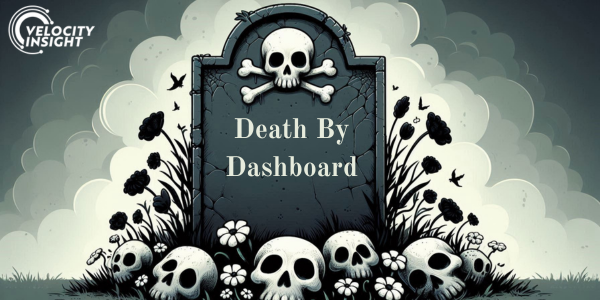I’ve been a builder and user of Business intelligence tools for E&P companies for two decades, and now I run a team that does a lot of it. BI tools are affordable, useful, and often fun (to me, at least!).
But one risk has lurked in the background all that time – a destiny that almost all companies fall into: Death by Dashboard.
Like a lot of engineers, I love building stuff. Using a cool tool to streamline a process, save myself time, or effectively communicate what I see in the data is just plain fun to me. I love the freedom that BI tools provide – with the right permissions, it’s easy to smash data together, experiment with visualizations, and share what I’ve built with my team.
But over time, this freedom leads to bloat. Like the carnivorous amoeboidal alien of The Blob, dashboards have a tendency to spread. They get bigger and more unwieldy, more numerous and more scattered. What started out as a couple of tools built by one lone engineer, becomes hundreds of reports scattered across departments and asset teams, all refreshing nightly (or god forbid hourly!). The IT department is pulling their hair out, execs don’t know where to look, and everybody’s pointing fingers. Or maybe just drowning in pink slime.

Survival Strategies
If you’re trying to run a better E&P company, someone needs to keep an eye on this problem or it will swallow you. The answer, sadly, isn’t in a better machine gun or a shiny new BI platform. The solutions are pretty simple and boring. But they work.
1) Assess your strengths and weaknesses
Measure, measure, measure. Which reports are getting used, and by whom? Whether you’re on Spotfire or Power BI or something else, you should know what your usage metrics are. Who’s using which ones? Which ones aren’t getting used? Why? These logs are easy to pull and visualize – without that knowledge, you’re blind to what’s going well and what’s a waste of time and resources.
Beyond simple usage metrics, have you asked your team which tools they find most useful? Sometimes people spend a lot of time looking at dumb things. What are the tools they really find interesting or insightful? There may be reports that are only used once a month, but that one day a month is CRITICAL for how business decisions get made. You also may find that some people in your organization don’t find anything useful, which opens a whole new group of conversations.
2) Defend the strong
Armed with your usage metrics and employee polls, it’s time to strengthen what’s already strong. Build change management, add documentation, talk about what needs to improve. Bring those tools into a Center of Excellence so you can put governance and change management in place. Make sure that automated reports go out and mobile versions of the reports are iPhone-friendly. Bundle groups of similar reports together into web apps that give people a “one stop shop” (Power BI Apps are a great approach here).
3) Let the weak die
We know of a company that discovered they had five hundred dashboards refreshing every night. They are a good sized company, but really?! Is there any chance a company can actually use that many reports in their decision-making? Eventually, you’ll need to cull the herd.
If a report didn’t get viewed in the last year, kill it. Last quarter? Probably kill it. Literally no one mentioned it as a “favorite report”? Shut off the automated emails and see if anyone complains. Consider a hard cap on how many reports can be refreshed each night. Not necessarily because it costs too much, but to force people to really think about what they’re asking for. Why do you need that report? Could you get the answer from one that already exists? Should this be a new tool, or maybe just an additional page in a tool that is already in place?
What’s the point?
Your goal is not dashboards, your goal is rapid, high-quality decisions. Are BI tools making it easier for you to get there, or a gelatinous weight around your proverbial ankles? Give us a call if you’re struggling with this – we love to help people sort out the difference!


